If you’re an aspiring firefighter, have you ever wondered what the other fire department ranks are and what are your chances of getting promoted? It’s important information to know before you apply to any department.
Across this site, you will find many guides that I have created about becoming a firefighter in the US, and the different qualifications for the job. However, many of these relate to the entry-level positions and the initial hiring process.
If you’re more of a visual person, I’ve created a YouTube video explaining all of the ranks and the structure of a fire department.
Once you apply to become a firefighter, there isn’t one single position to aim for. Not all roles in the fire service are the same and there is always room for progression through the different fire department ranks. But what are those fire department ranks within the service? What is the chain of command in the fire department and what roles can you aspire to beyond your work on the front line?
In this guide, I want to take you through the structure of the fire department – including both the structure and different fire department ranks. There are more ranks in major fire departments than many new recruits and outsiders may realize.
I will take you through them, from the first role after being hired to the very top position. By the end of that section, you should have a better idea of who answers to who and the roles that they have in a department.
Beyond that, I want to talk more about the opportunities for promotion between the ranks, some of the other titles that you might find in the department and a little about the salary expectations.
Table of Contents
How Fire Departments Are Structured
To understand the way that the ranks work within a fire department, we have to look at the structure of the department itself. While there is a fairly linear hierarchy in the roles and job titles, there are branches within the department.
- Company
- Station / Unit
- Battalion
- Department
Most firefighters work on an engine, truck or rescue company that is responsible for a certain piece of apparatus and equipment from their station. Some of these will be classed as a special unit, such as the EMS unit, search and rescue unit or other disaster relief units.
These companies are assigned to fire stations and several of these stations can make up one battalion. Major cities will require more than one battalion of different stations to handle demands and high call volumes. These battalions all fall under the management of the chief of the department and the city manager.
Of course, this can all vary depending on the size of the fire department. These complex structures, with multiples companies and different battalions, apply to those cities with many different divisions and stations in a wide area.
Small scale fire departments or volunteer fire departments in small towns may only have one or two stations. Therefore, they have less need for such a complex structure and chain of command. They may not even have that many people employed to warrant that approach.
Fire Department Ranks
Typically speaking, you will see 8 different ranks in the fire service. While not every department will have all of these ranks or be structured exactly the same; they will all have some version of these. For example, where I work we have probationary firefighters, firefighters, lieutenants, captains, assistant chiefs and a fire chief.
The different fire department ranks include:
- Probationary Firefighter
- Firefighter
- Driver Engineer
- Lieutenant
- Captain
- Battalion Chief
- Assistant Chief
- Fire Chief
One thing that you will notice about the structure of the fire department is how closely it matches that of the military. They have taken some of the same names for the positions of command and there is the same sense of structure and discipline.
As you can see, there are a lot of steps between your first job on the department and the very top of the ladder. So, let’s start at the very bottom rung of the ladder and work our way up.
Probationary Firefighter:
Before you can become a firefighter at your new department you have to work as a probationary firefighter. What this means is that you will do the same job as the other firefighters, but your primary task is to learn.
This is the most basic entry-level rank in the fire service. After you complete your training at the fire academy, go through the hiring process (including the firefighter interview, background checks, and drug screening) this is where you will begin.
You will “be on probation” for a fixed period (usually 1 year, however I have heard of departments doing as little as 6 months to as much as 2 years) as you learn all the necessary skills to advance in the ranks. While on probation, you will be required to take instruction from those above you. You may be shadowed by a senior firefighter as you go through your training.
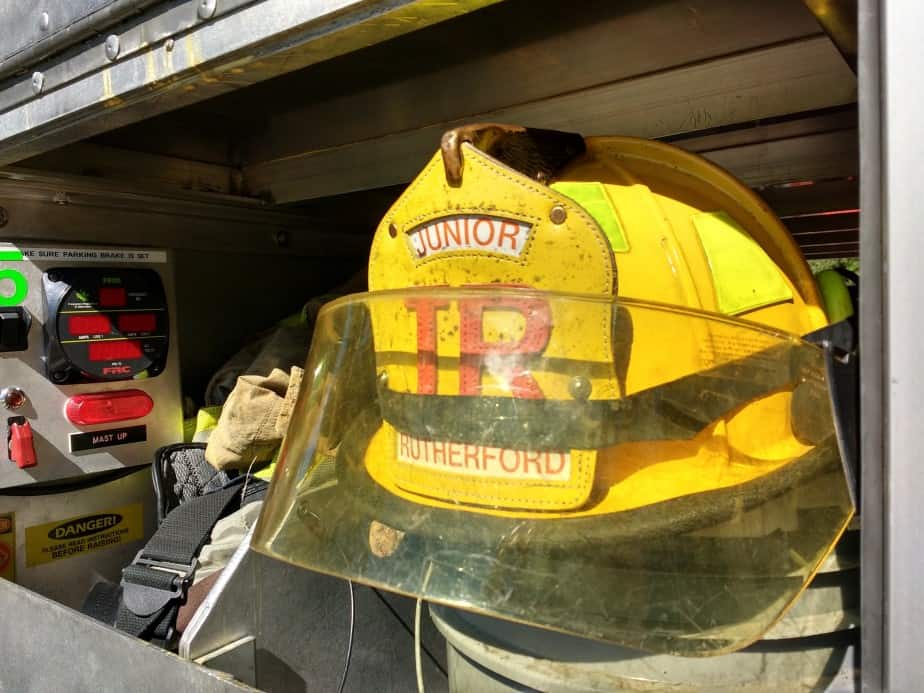
A probationary role is ideal for fire departments and recruits. New firefighters get to learn with hands-on experience and get access to a range of training materials.
Those that don’t have their firefighter 1 and 2 certifications or an EMT certification may be asked to do so within a given time. It also means that stations get more help at the station working on boring jobs as they learn.
Many offers at this entry-level post are conditional on meeting certain goals. If you fail to make the cut by the time your probationary period is over, you could lose your position at the department.
Firefighter:
Once probation is over you can become a firefighter. This is still pretty low down in the ranks and you will take instruction on calls from commanding officers. The change in rank simply means that you have now proven you are qualified to handle the position and not continuously be watched.
This means carrying out all those basic tasks in fire suppression, hose line placement and other rescue services that probationary firefighters trained for.
There is the misconception that everyone at the station is a firefighter because this is the common term for the profession. While many at a given station are firefighters, there are many more ranks that make up a department.
Driver/Engineer:
Next is the Driver/Engineer role. Some departments will use the term apparatus operator because the term driver doesn’t really cover the full range of roles involved. Others use fire equipment operator or firefighter engineer.
This is classified as a higher level because of the additional training and skills involved. These are the team members that can operate the trucks and machinery with a greater degree of skill. They know more about the tools and tech and will carry out the necessary checks on the vehicles. If the fire engine or aerial ladder are required on the job, the engineer is the one that will use it.
Any qualified firefighter with a valid state license can drive the truck, even without a CDL (you read more about that in my other article by clicking the link), but not all crew members are authorized to handle all the equipment.
In departments where there is no driver engineer on staff to provide this service, the role will fall to one of the firefighters. However, they can only call themselves acting DE at that moment.
Lieutenant:
Whatever your main duties as a firefighter in the department, you need someone to take orders from during daily operations. There is a long line of command here before you get to the very top of the ladder.
The next position that you could get promoted to from firefighter is Lieutenant. If you aren’t familiar with the military-style terminology for these positions, then think of the lieutenant as like your supervisor.
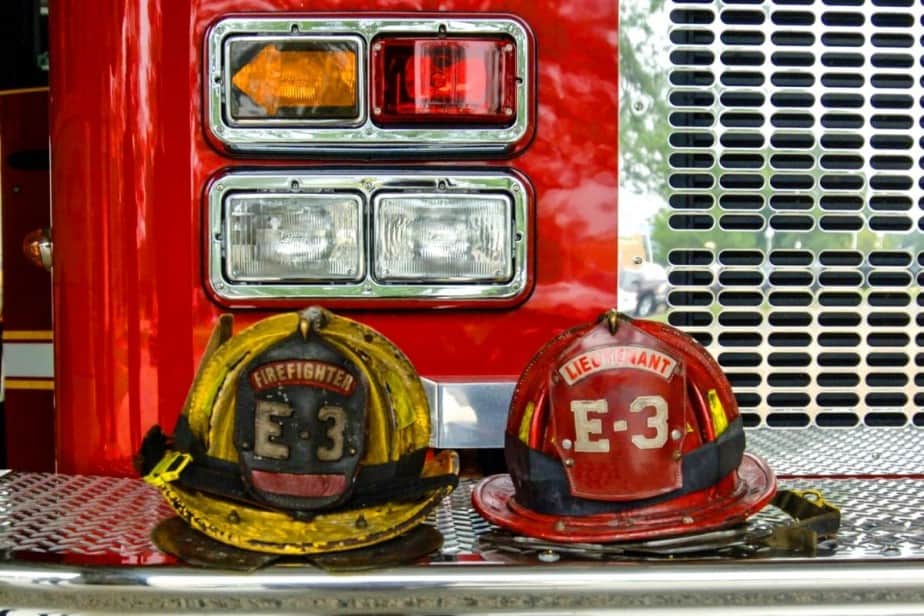
They don’t call all the shots for your company, but they are able to relay the orders of their superior and keep the lower-level recruits in check.
Like many supervisors in other professions, many probably don’t get as much credit as they deserve. They may not be fully in charge of the engine company they work in, but they do have a lot of responsibilities when it comes to the day-to-day running of the firehouse.
They need to make sure that everyone knows their role whether they are carrying out basic tasks back at the station or working on an emergency response call. The Lieutenant is the glue holding the operations together.
Captain:
The supervisory lieutenants work beneath their captain, and in many ways, the role of the captain is very similar.
They are responsible for ensuring that everyone knows their place and their role in the daily operations of a specific area in the department. Their lieutenants work beneath them in individual companies to pass on the orders while they oversee the work of wider divisions.
There may be a dispatch captain running operations for the dispatch of apparatus and crews to incidents, an EMS captain that focuses on the emergency medical services and a training captain that focuses on the training of those new probationary firefighters.
If a captain is not available or there isn’t one currently hired, a lieutenant may take on the title of acting captain unless they are promoted to the role.
Battalion Chief:
The captain is an essential cog in the machine dispatching crews and giving out orders so that different companies can work effectively. However, they cannot do so with the Battalion Chief overseeing everything.
There is also a very important human resources side to the job of the Battalion Chief that is often underappreciated. Those of us on the outside looking in see firefighters as those heroes that are always on call to fight fires and save lives 24/7.
However, these crews still need to work in shifts and the stations must be manned by the right crew members at all times. It is the job of the Battalion chief to draw up this rotation and adjust it accordingly so that every station always has the right team members on board.
The Battalion Chief is also responsible for a lot of paperwork on incident reports, the running of the battalion and more. Finally, they are also required to help with coordination on emergency scenes when multiple companies are involved.
Captains that are promoted to Battalion Chief will quickly find that they have a lot more to deal with and a very busy workload. But, it can be a rewarding job for those with the interpersonal, managerial and administrative skills to make it work.
This is the sort of job that new hires may apply for if they have a degree in fire management and administration. They can put their qualifications to use in this role to oversee the battalion, improve the actions of the companies and improve the efficiency of the divisions.
Assistant Chief:
You might think that this is about as high as it can get if you have a chief overseeing the battalion like this. But, you would be wrong.
The very top of the ladder is reserves for the Fire Chief and they have an Assistant Chief below them. The Assistant Chief essentially provides support to the Fire Chief when dealing with all things related to the fire department.
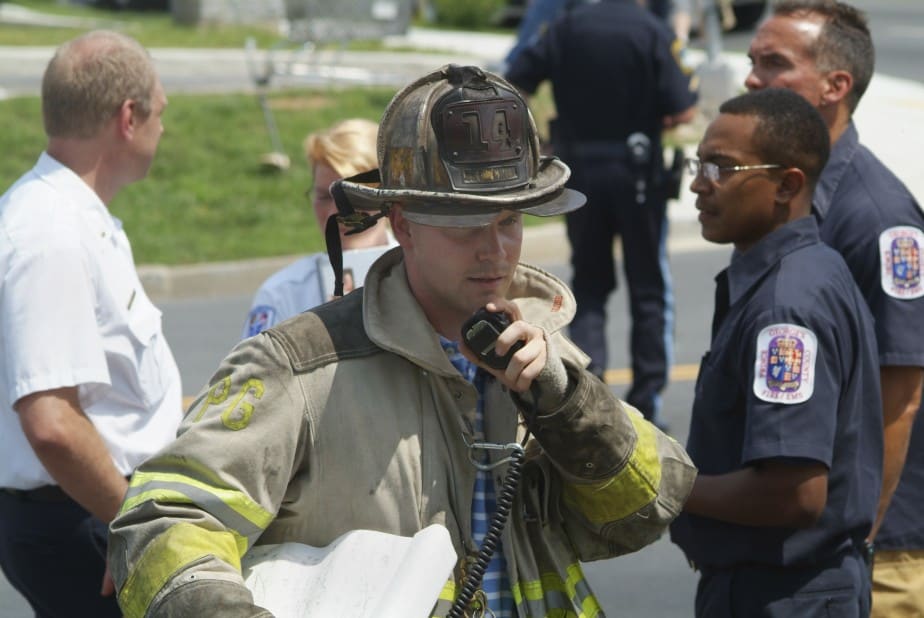
This isn’t just about orders for battalions and the operations of a company. This is where they deal with factors that have wider implications for the department. For example, both the Fire Chief and his assistant need to have a good understanding of the budgets of the fire stations, current costs and proposed plans for improvements.
This is far above the pay grade of the Battalion Chief and essential if the whole city department is to improve its response times and success rates on jobs. This administrative role of assistant also means the chance to work on projects that might introduce new programs to the fire department.
This could be projects that benefit the health and productivity of the crews but also community outreach or training programs for improved fire education.
Fire Chief:
The Assistant Chief does all of this under the supervision and command of the Fire Chief. The chief almost gets to have the final say when it comes to matters of spending the budget, creating those programs and implementing important changes.
They have control over every element of the department and its divisions – from the fire safety services and training facilities to the operations divisions, EMS services and any specialist divisions.
I say that they almost have the final say because we have to remember the input of the city manager/mayor in all this.
A good fire chief will have a strong relationship with the city manager/mayor with effective communication on these matters. This will help them achieve their aims and secure more funds for their department.
Variations in Fire Department Ranks
Before I go on to look at some of the considerations for promotion and progression in this system, I want to mention some of the variations in the structure.
First of all, there isn’t this level of command and the same sort of responsibilities in small volunteer fire departments. Secondly, there are many fire departments across the country that use a combination approach where they employ career firefighters, paid-per-call firefighters and volunteer firefighters in the same department. These combination departments bulk up the numbers when it is difficult to hire a fully-qualified staff where everyone gets the same rate.
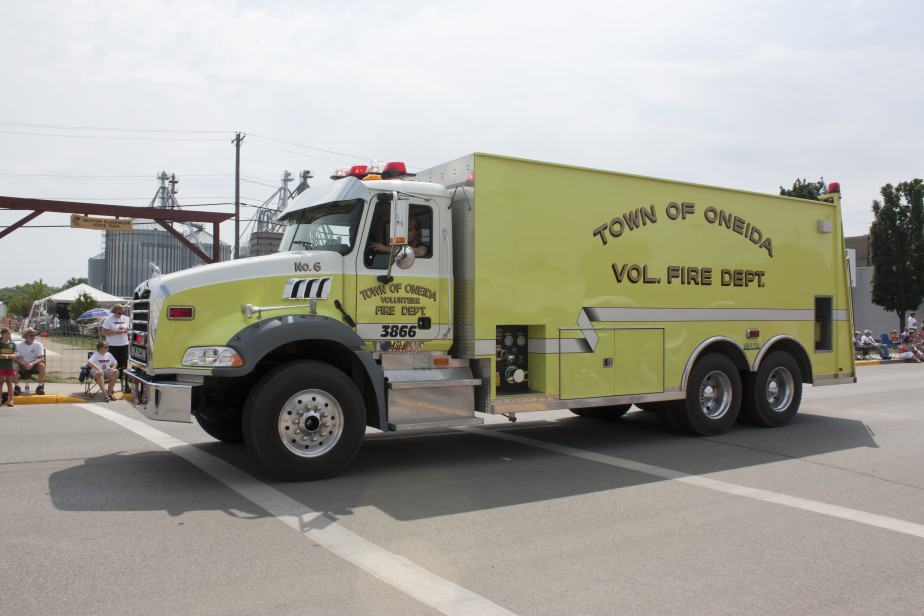
Volunteer firefighters will always be at the bottom because they usually don’t have the same training or professional experience. They do a wonderful job serving where necessary but don’t draw a salary.
**Also, it’s important to note that this is NOT a knock-on volunteer firefighters. They perform a wonderful job and are usually never thanked for the work they do. This guide is simply meant to illustrate the career differences. **
Some will progress onto paid-per-call roles where they can earn as they work but not receive a fixed salary. Volunteers that put themselves through the correct training and hiring processes can progress onto a role as a probationary firefighter and start earning that salary.
There are also additional roles seen in fire department if they have specialist divisions or the need for other leadership ranks. Some major departments will also have a District Chief, a Deputy District Chief, Commissioner, Deputy Fire Chief, Assistant Deputy Fire, and more. Departments with a major EMS division may also bring in Paramedics, Firefighter/Paramedics, Field Chiefs, and more.
Getting Promoted Through Fire Department Ranks
Promotion isn’t always on the minds of every firefighter. Some prefer the idea of working on the front-line to working behind a desk. Some volunteer firefighters like to work part-time for their community. But, others like the idea of moving up the ranks, getting into a better pay grade and working better hours.
Gaining a promotion in the fire service isn’t always easy. There is a strict line of command here and certain expectations before you can progress up the chain. It doesn’t matter if you show exceptional skill, management skills and problems solving in your first year as a qualified firefighter.
You aren’t going to jump the queue right up to lieutenant that easily. Each role requires a fairly fixed amount of time served before there is the chance to progress to a higher level. There is also a strict process of examinations and interviews in order to get the job.
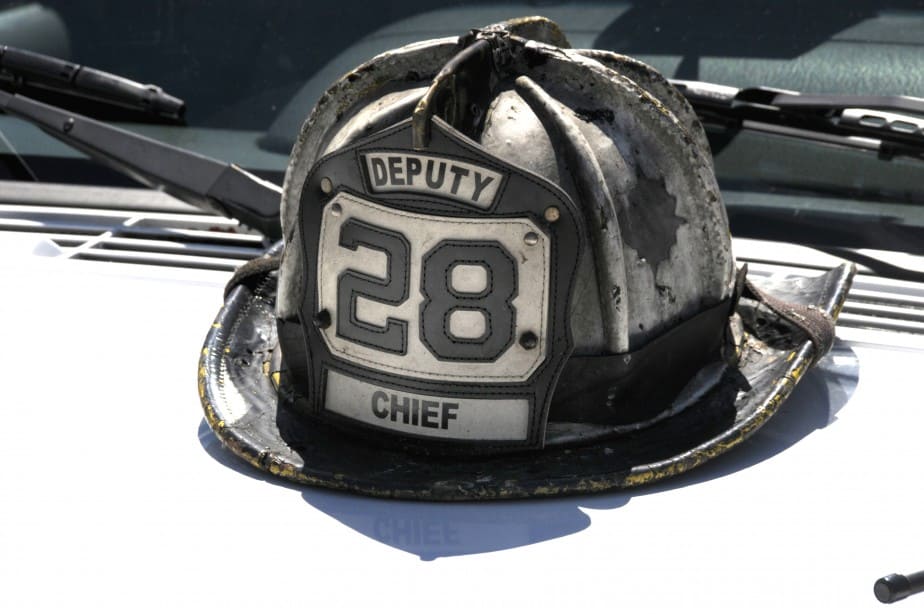
It doesn’t matter how well your superiors know you personally or how much promise they see in you. If you mess up the interview or fail the exam, then you will have to try again.
Also, don’t forget that there will be people in your rank in other companies that have more experience and will also want to fill any vacant positions that may arise.
Some candidates will rise through the ranks with greater ease because they know how to make the most of their time in each role. They understand the chain of command and the end goals, not just their current duties.
The first thing to do if you want to get ahead and prove your worth to those higher-ups is to understand every aspect of your current role and perform your duties perfectly. Show you are a quick learner, a team player and a problem solver where it counts.
Then, use your problem -solving skills to observe the department through the mind of someone in an administrative role. What would you do to improve the department and its efficiency? It is OK to make suggestions in a respectful manner. You don’t have to be a yes-man all the time.
You can also use your time in your current role to study courses in management, administration and other subjects that could help you further your career down the line.
Online courses with colleges and universities will provide official qualifications that look great on a resume. Then, when the time comes, you can bring this all together and shine when it comes to those interviews and examinations.
Salary Prospects for Different Fire Department Ranks
There is a very rough average nationally that places a firefighter’s salary at around $52,500 per year (or $25.24 per hour), with lieutenants earning around $55,000+, captains $60,000+ and fire chiefs $70,000+. This big jump in pay, along with other financial benefits is a big incentive for firefighters to try for a promotion when they have enough time on the job.
Don’t forget that these figures can vary greatly between states. Some of the poorer states like Alabama and West Virginia don’t offer so much while big metropolitan departments in New York and California will pay considerably more. There may also be different jumps in pay in different departments.
If you’re wondering how much a firefighter is paid in your state check out our state-by-state guide to firefighter salaries.
Every department is different, so be sure to research the ranks and structure of your local department before applying. Much of the information here is based on the national average and the general process across the US. The structure is the most common for metropolitan fire departments.
This means variations in pay, expectations for each position, and the amount of time you need to have on the job before you can get hired.
That is why it is important to learn the ranks and structure of your local department. What are the opportunities and different ranks in the department where you will make your living? How many firefighters are employed there and how long do you have to be a probationary firefighter before progressing further?
People Also Asked:
How do you address a firefighter?
The proper way to address a firefighter is by saying “Firefighter [last name].” In the fire service, firefighter is an official rank in the overall hierarchy of the department. Also, if the firefighter holds an EMS certification they may also be addresses “Firefighter/Paramedic [last name].”
What is the highest rank in the fire department?
The Fire Chief is the highest ranking position that you can achieve in a fire department. However, in most cities and municipalities, the Fire Chief answers to the city manager or mayor.